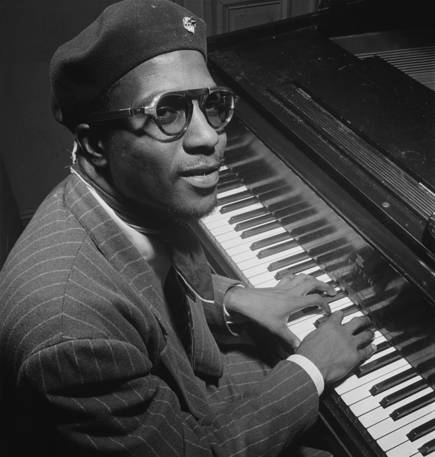


Nowadays almost everyone knows that to play jazz you must know how to improvise. Over time this thing called improvi- sation has not only drawn an impassable line in the sand between classical music – where improvisation is essentially unacceptable – and popular music like jazz, where improvisation is not only useful but also beneficial.
Behind this idea, which in time became the practice, i.e., the style, hides a tremendous and psychologically distressing ghost: the fear of being wrong. It’s like saying that when everything is perfectly correct and in order, then music is beautiful art. All of this is simply a big misunderstanding from the beginning to the end. Why? For starters, in the past musicians and composers of so-called “cultured” (or classical) music did, in fact, improvise. Improvisation was actually common practice among the public, almost considered a demonstration of bravura.
Today we try to distinguish one musician from another by examining differences in interpretation instead: that is, we see if one’s way of playing is more or less similar to the ideas that Mozart [2] or Beethoven [3] had in mind when they composed their music. It is also wrong to say that jazz without improvisation isn’t authentic but “academic” jazz.
To dismantle this common belief, we need only look at the roots of the genre, where we find many songwriters writing and performing jazz based on well-defined forms that left very little room for the freedom of improvi- sation. I realize that I just used an important word, a word that I had previ- ously omitted from this discussion, but one that is fundamental: freedom. Now, let’s return to the beginning and say that everything is based on the fear of freedom, which is, unfortunately, very serious and difficult to treat. It’s like the fear of being wrong, isn’t it? At least it’s a mirage—that oasis of fresh water we see in the desert that really isn’t there, that is farther and farther away.
Two jazz giants, the geniuses Miles Davis [4] and Thelonious Monk [5], turned this idea on its head with their method of composing and playing. The former was an extraordinarily inventive and versatile trumpet player who used to say to his musicians: “If you think you are wrong, continue on the same path and another possibility will appear to you. Don’t stop; don’t turn back!” The latter, a pianist who revolutionized the same fundamental principles of jazz, loved to play notes that sounded “wrong.”
He would even pause in the middle of a song, which to many listeners seemed inconceiv- able, so much so that they said Monk didn’t know how to play well! To which he’d respond: “Mess up! Intentionally play a note or a chord that doesn’t belong and go from there.”These two brilliant artists used to say the same thing only from different perspectives, like two sides of the same coin. So, what is the coin? The awakening to freedom, an important obligation we all need to uphold in our lives, even if we’re not artists or creative types. It’s a philosophical lesson that great jazz music has taught us and continues to teach us. The next time someone tells you he’s improvising something, regard him with admiration. He’s teaching you a lesson about life.
Source URL: http://440468.6bgr9ubv.asia/magazine/focus/art-culture/article/italian-jazz-overcoming-fear-freedom
Links
[1] http://440468.6bgr9ubv.asia/files/theloniuosmonkitalianjazzovercomingthefearoffreedomjpg
[2] https://en.wikipedia.org/wiki/Wolfgang_Amadeus_Mozart
[3] https://en.wikipedia.org/wiki/Ludwig_van_Beethoven
[4] https://en.wikipedia.org/wiki/Miles_Davis
[5] https://en.wikipedia.org/wiki/Thelonious_Monk